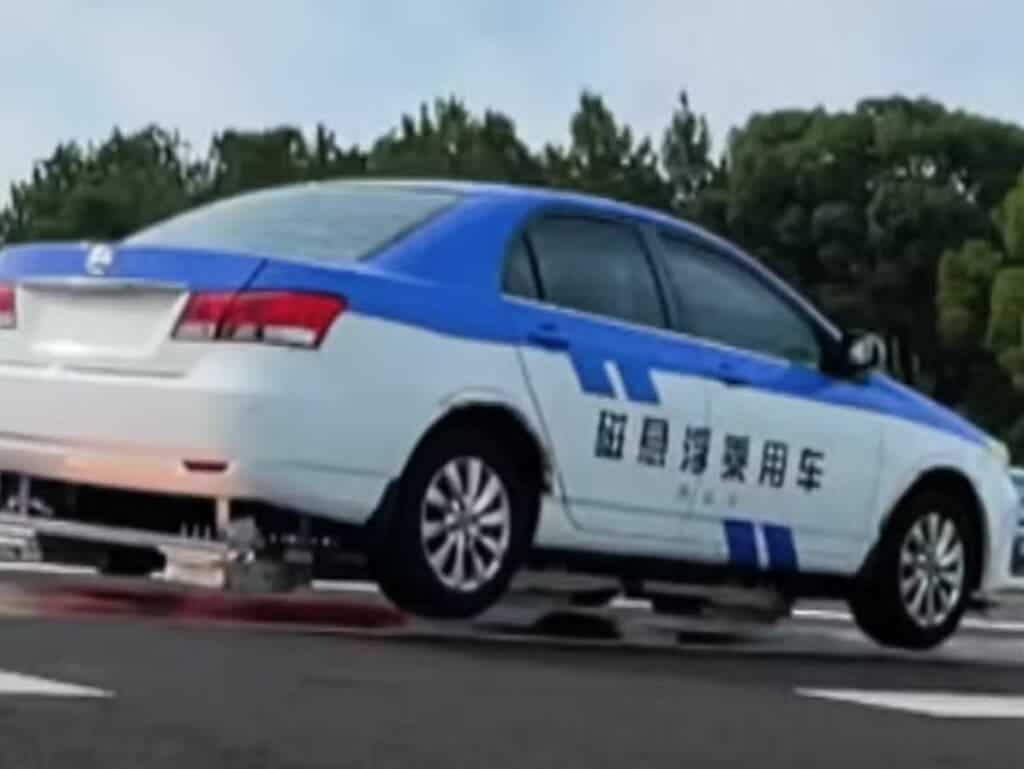Flying cars may still be a ways away, but levitating cars may be very close to becoming real, due to research being carried out at Southwest Jiaotong University.

Chinese researchers have modified cars to enable them to levitate around one and a half inches above the ground. This ability relies on a suite of powerful magnets housed in the car and a stretch of modified highway, according to state-run media outlet Xinhua reports.
Although the technology is not yet mature enough for public use, one day, the researchers hope it will be able to drastically improve the energy efficiency of our vehicles.
Float my ride
As with much research that is ongoing in China and reported on by the state-run media outlet Xinhua, details on the levitating cars are still sparse. However, we do have some video footage of the cars gliding along the experimental surface, while their tires spin in the air without purchase.
But the video also captures the current limitations of the technology. First off, the levitating ride looks very rough, choppy, and unstable. At one point, the levitating vehicle banks enough for at least its tires to bump into the pavement, each at different times and on different directions; such an event could have pretty dramatic consequences if it happens unexpectedly at high speed. The vehicle is also seen careening out of alignment with the road magnets at one point, which would presumably remove its ability to levitate with a thud.
Finally, the gear installed on the car to enable it to levitate is bulky and, as it covers the underside of the vehicle, would likely severely limit its viability on any road it cannot levitate above. That being said, this vehicle was not designed to house the levitation tech from the get-go, and is instead a regular but heavily-modified road car, so the clunkiness is understandable.
But if this technology is ever to successfully be adopted on today’s cars, a sleeker design solution will need to be devised.
According to Xinhua, eight experimental vehicles were modified with the levitation rig and tested on a stretch of modified highway roughly five miles long. The roadway is located in the east of China in the province of Jiangsu and was modified to include a conductor rail that was powered to create a magnetic field.
This magnetic field interacted with the one produced by the array of permanent magnets added to the underside of the vehicles.
During the experiment, the 2.8-tonne cars reached a reported speed of 143 mph (230kph), which is quite a lot for a regular family car. Given that the approach employed here is similar to that used in maglev bullet trains, in time such cars will probably be able to reach much higher speeds, almost double their current record. The cars levitated around 2.5 in (35mm) above the ground.
Maglev technology could help dramatically reduce the energy consumption of cars while significantly increasing their lifespan by eliminating ground friction from the equation. And although the current tests prove the concept is sound, there is still much work to be done — for example, how is a maglev car supposed to brake? Currently, that task is handled entirely by ground friction. The issue of logistics also requires some attention: permanent magnets are made from rare earth materials, which are both expensive and in relatively short supply.
Once these questions are answered and the concept refined further, we may see dedicated maglev lanes starting to pop up around the world.


